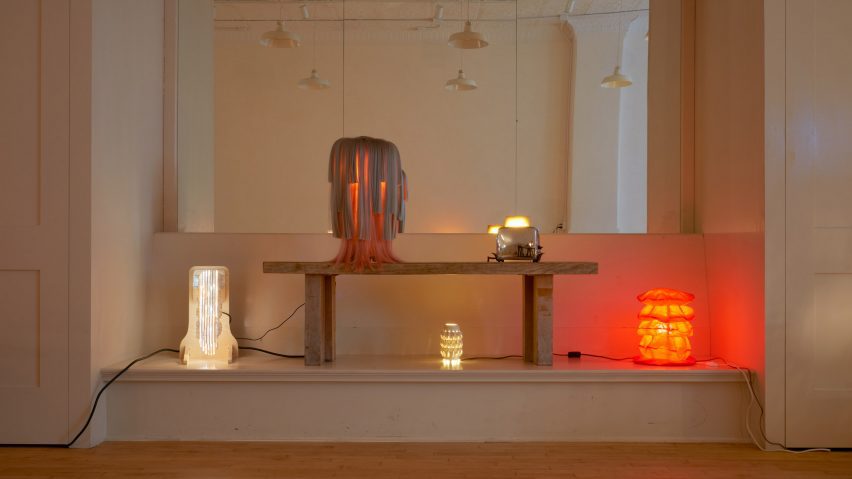
Collective shows featuring small objects take centre stage during NYCxDesign week
A proliferation of multi-designer exhibitions showing variants of a single object allowed the work of emerging and local designers to take centre stage during NYCxDesign week, Dezeen US editor Ben Dreith reports.
While plenty of the showrooms on Madison Avenue held events featuring contemporary European furniture design, many local curators opted for formats that allowed for many designer's work to be shown in one place.
Of these shows, some of the best were those that took a variation-on-an-object approach, where dozens of designers were asked to create a single genre of object. These included the Head Hi Lamp Show in Tribeca, which featured lamps by 54 designers in a wide range of styles, themes, and considerations, condensed into a single, well-trodden form.
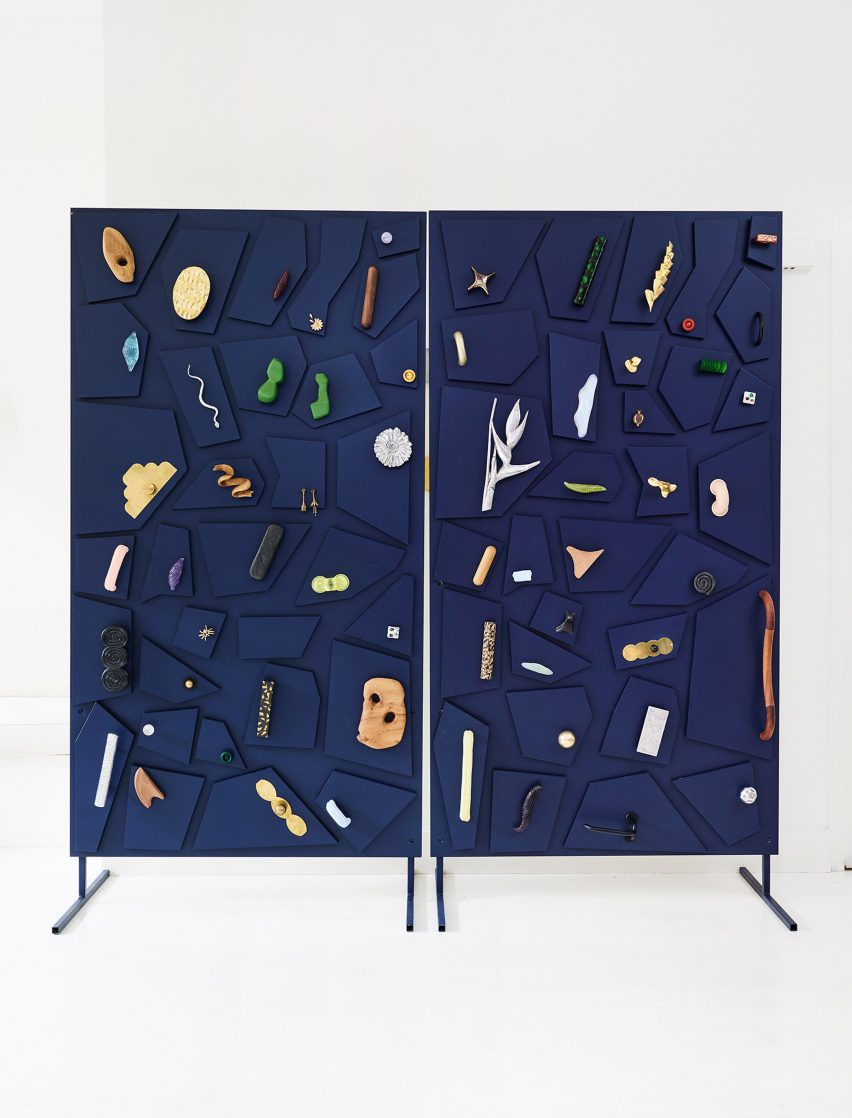
The Lamp Show happened for only a few days in a loft downtown, drawing hundreds of visitors despite the lack of any flashy, large-scale works or LED screens (though, like during Milan's design week, there were waits, even with the timeslot system the curators employed this year).
All of the objects were for sale, and most were relatively affordable. Many of them were playful – even kitschy, such as a pair of martini-glass lamps by Brooklyn designer Jesse Lee.
"The importance of the lamp show is that the main objective is the creation of this object rather than the commercialization of this," Head Hi co-founder Alvaro Alcocer told Dezeen.
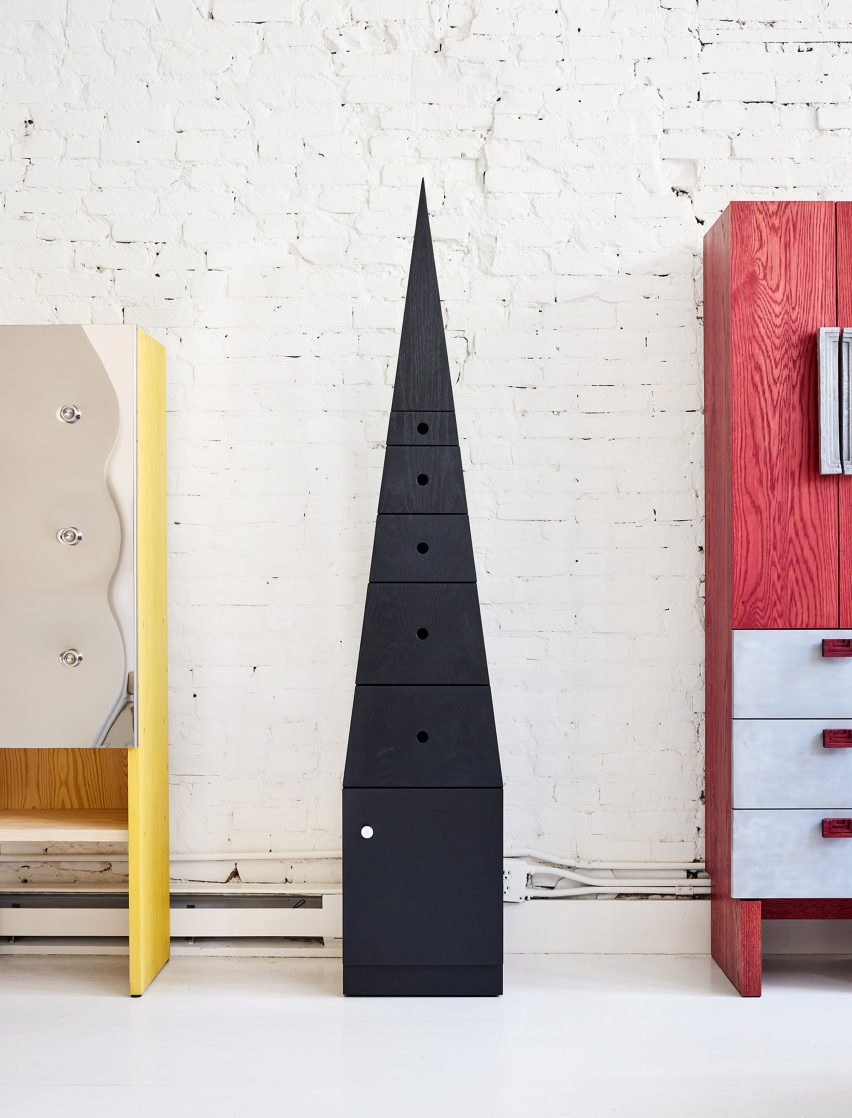
According to the curators, the format allows for new designers to take part, but also provides constraints and an opportunity to experiment for people working outside of the particular object, in this case the lamp.
The constraint also works to distill the nuances between different sensibilities, something that may not be as forthcoming in a showcase with larger objects, or even in the typical fair set-up, where many objects are divided by booths and repetitive sectioning.
Another show that demonstrated this, albeit from a more explicitly commercial position, was the launch of hardware company Petra by Site Unseen founder Monica Khemsurov.
For Petra's first show, Khemsurov featured 27 designers who applied their handles to cabinets and drawers from Site Unseen's collections. Khemsurov was motivated to create the collection as she believes that nobody is "treating hardware as contemporary design objects".
She has taken the ethos of the mult-designer show and brought it to a brand, a decision motivated by the fact that many brands offer only one "aesthetic" of hardware and from a personal love of "modernist sculptural door handles".
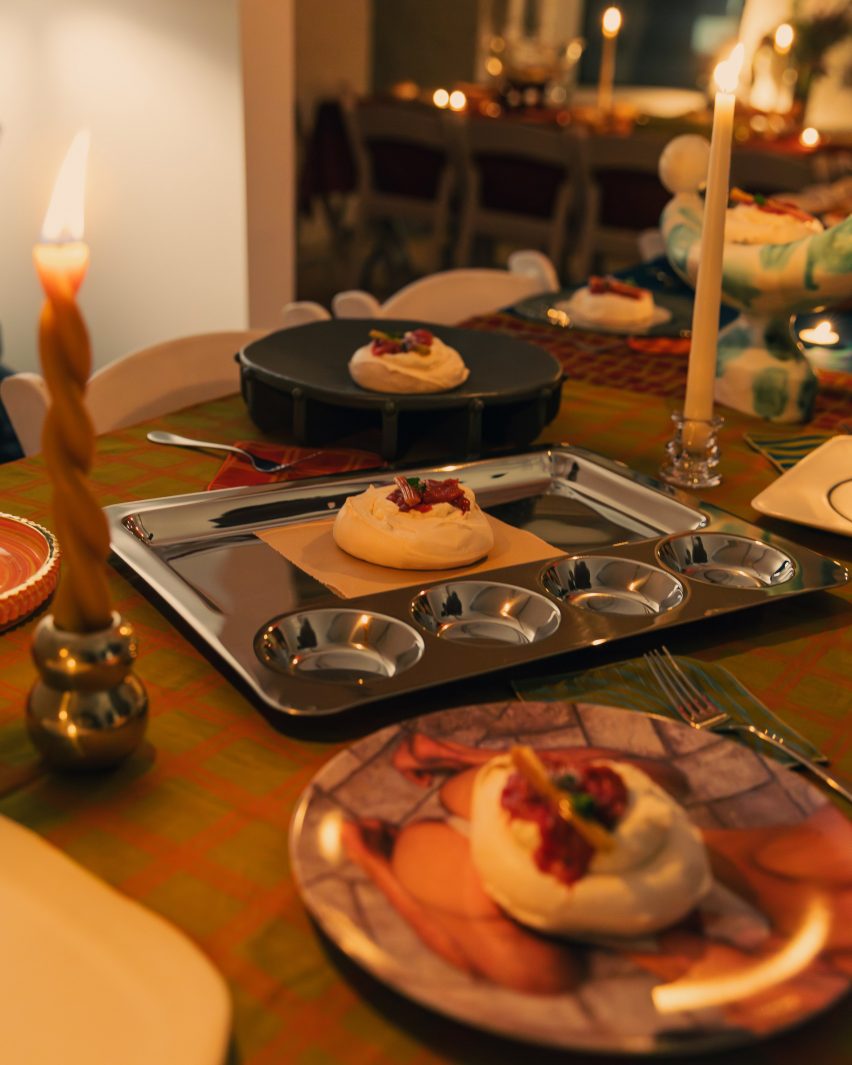
This type of multi-designer/single-object approach allows for experimentation and expression on often-overlooked aspects of the home, explained Khemsurov.
"I think it's always been a popular approach, even before this year, because it gives the designer/participant a focused brief, but also lets them go wild with their own point of view and approach," she told Dezeen.
"So each object has its own personality, but the result is a show that feels cohesive and easy to approach and understand," she continued.
"Everyone gets what a serving bowl is – you don't have to explain it to them or tell them any big complicated story – but seeing so many unexpected, totally different versions of it next to each other is such a nice surprise, and can broaden your idea of what this familiar object can be."
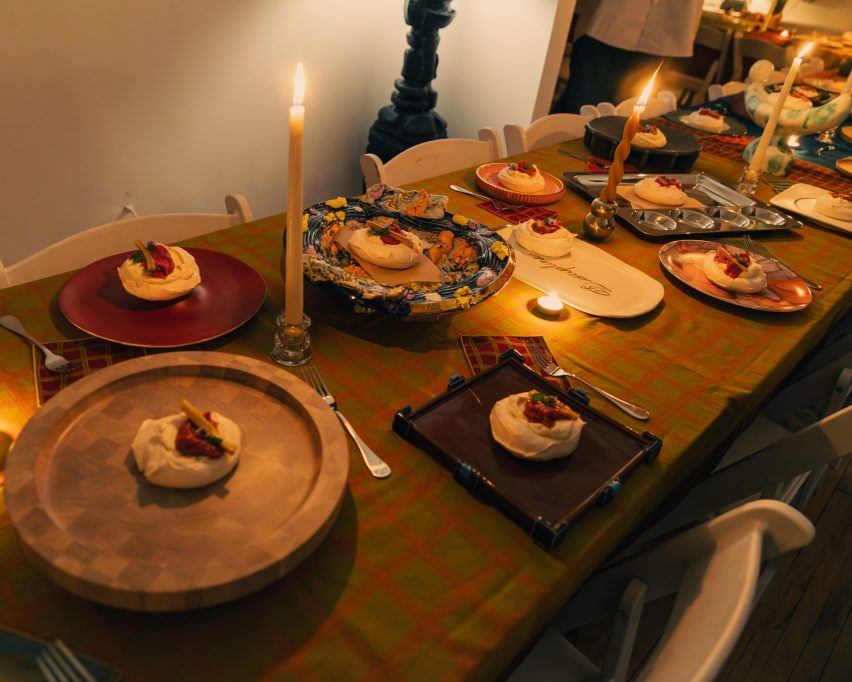
Of course – as with the Head Hi show – featuring so many independent designers within show also presents a unique promotional opportunity, given that many of the designers included have social media followings of their own.
Focusing on the social and community of these sorts of multi-designer/single-object curations was a dinner and party curated by Superhouse gallery founder Stephen Markos and LA designer Caleb Engstrom.
Called Let Them Eat Off the Plate, the "one night only show" featured plates by 50 designers, arranged on top of a large table. The gallery was then opened to a party with the table – and the remains of the recently eaten meringue – on view.
"We think it's a very democratic concept all around," said the curators.
"It doesn't require a huge production budget or large physical space to produce a plate and so this led us to a very diverse group of artists and designers for the show."
"Multi-designer shows inherently bring people together, but I think the impetus for us, for our show specifically, was to create something a bit fleeting or momentary with warmth and heart at its core, something not totally capital driven."
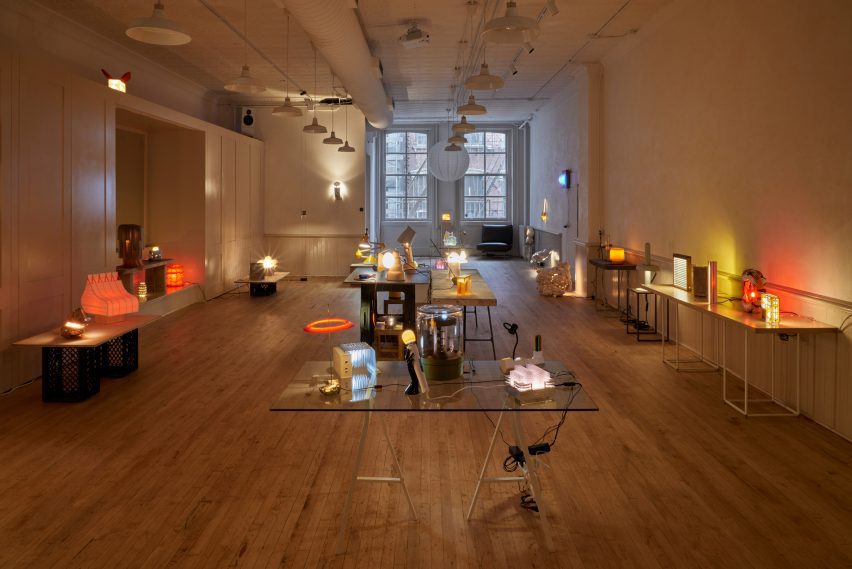
Other shows in this vein included a showcase at fabricator shop Brooklyn Metal Works, which featured spoons created by 21 designers.
Even outside of the single-object theme, many of the shows this week seemed to bristle away from largeness, or flashiness, or route definitions of design.
It should also be noted that many of the shows mentioned here did not feature on the official NYCxDesign calendar. One that did, though, was the souvenir section of the show.
Curated by Cool Hunting and Boym Partners, The Souvenir show in a Hudson Yards mall featured little distillations of New York – from a whistle designed to produce the same tone as the subway and a knickknack made of overdose prevention drug Narcan nasal dispensers.
Useless things, for the most part, but potent in their ability to condense something specific about locality into an object, as souvenirs tend to do.
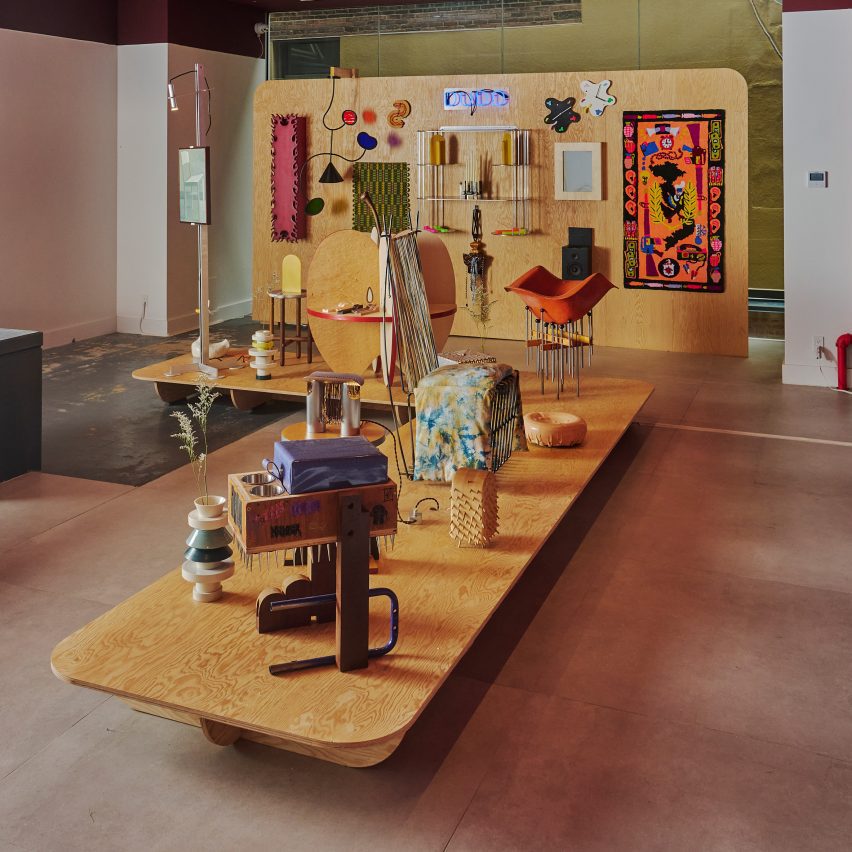
Nearby to the Head Hi, group show Jonald Dudd took an explicitly anti-commercial stance in its exhibition, which showcased strange and charming designs in a recently closed high-end sex shop.
"It's somewhat taboo that we are one of, if not the only, shows that champion an anti-commercial ethos," said curator Chris Held.
"One could argue, that the financialization of life in the US is so pervasive that works produced for pleasure rather than money are by definition illicit"
Another, called Paraphernalia in the East Village – curated by Eliza Axelson-Chidsey and Jess Fügler – showcased designs that focused on particular objects involved in the life and work of designers, such as a pill box by local designer Henry Julier that highlighted the designer's "daily regime" of medicines.
The curators spoke against the vision of design as "technological optimization" with "aesthetic veneers" meant to "sell as many units as possible".
"Quantity is not the metric by which something is considered design, but it is via the landfills of mass productions that we will be interpreted in the future," they wrote.
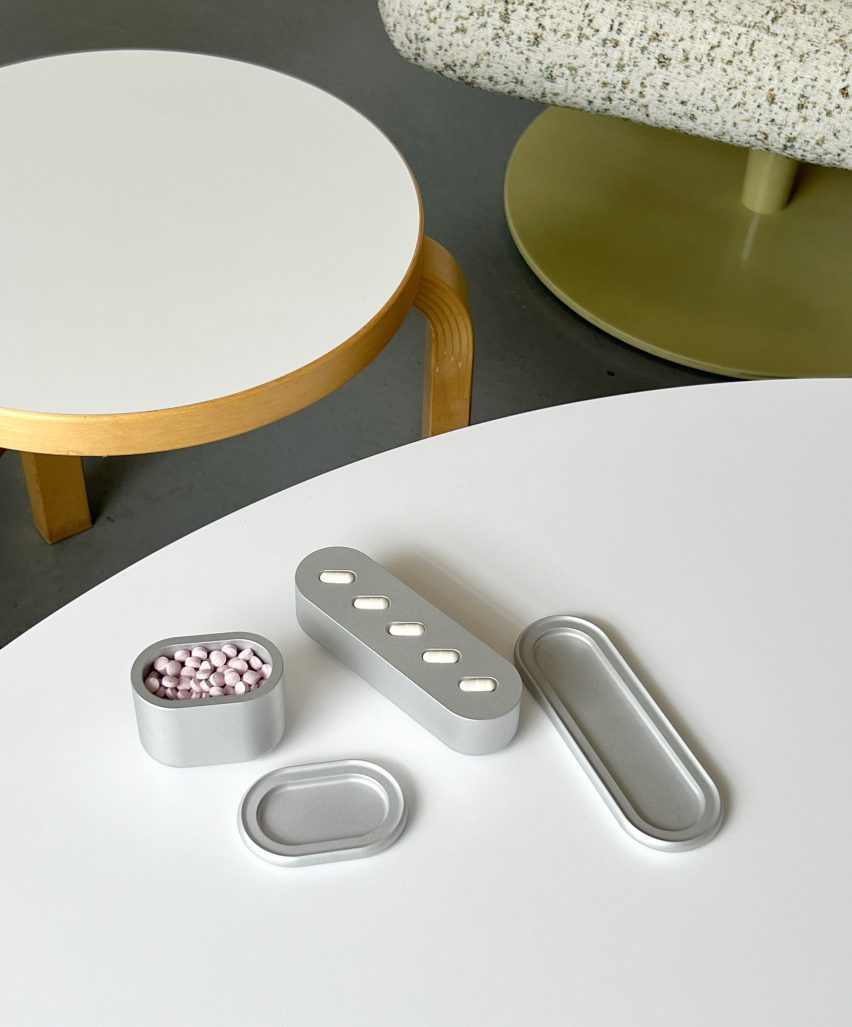
This, and the other shows this week, raised important questions about what a design week should be and if accessibility and mass-marketability are really the same thing.
Some during the week asked whether the launch of Design Miami Los Angeles and the participation of many collectible design galleries there cleared some attention for these smaller format shows.
Regardless, the prevalence of group shows put on by small galleries, making plates and lamps, and putting real thought into them may offer an avenue for creativity and expression.
NYCxDesign took place from 16 to 23 May across New York City. For more guides to fairs, events and exhibitions taking place all over the world visit Dezeen Events Guide.